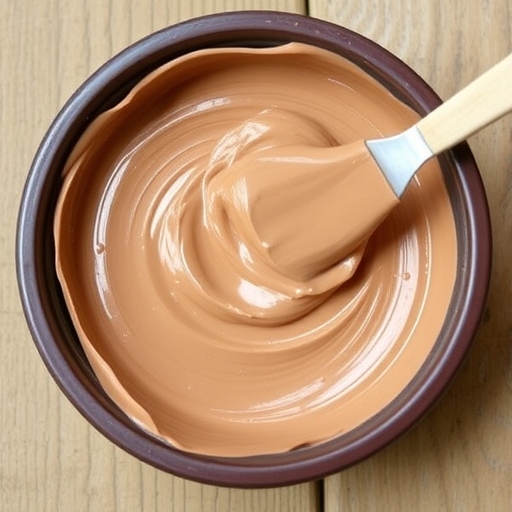How to Make Tan Paint: A Comprehensive Guide
Tan paint is a versatile color that can evoke warmth and comfort in any space. Whether you’re looking to paint your walls, furniture, or crafts, creating your own tan paint can be both cost-effective and rewarding. We’ll explore various methods of making tan paint, the materials required, and tips for achieving the perfect shade.
Understanding Tan Color
Tan is a neutral color that falls between brown and beige on the color spectrum. It often resembles the color of sand, making it a popular choice for interior design, furniture, and crafts. Tan can be warm or cool depending on the undertones used, so understanding these nuances is essential when creating your paint.
Color Wheel Basics
-
- Warm Tans: These have yellow or red undertones, giving them a cozy feel.
- Cool Tans: These have gray or blue undertones, resulting in a more sophisticated and subdued look.
Materials Needed
Before we dive into the process of making tan paint, let’s gather the necessary materials. Here’s what you’ll need:
Essential Materials
-
- Base Paint: Choose a white or off-white paint as your base.
- Colorant: This could be brown, yellow, or red paint, depending on the shade of tan you want to achieve.
- Mixing Container: A clean bucket or mixing tray.
- Stirring Stick: For mixing the paint thoroughly.
- Measuring Tools: To ensure you get the right proportions.
- Protective Gear: Gloves and a mask to protect against fumes.
Optional Materials
-
- Water: To thin the paint if necessary.
- Texturing Agents: Sand or other materials to create a textured finish.
Steps to Make Tan Paint
Step 1: Choose Your Base
Select a base paint that will serve as the foundation for your tan color. A high-quality latex or acrylic paint in white or off-white is recommended for the best results.
Step 2: Determine the Shade of Tan
Decide whether you want a warm or cool tan. This will help you choose the right colorant. Here’s a quick guide:
-
- For Warm Tan: Use a combination of yellow and brown.
- For Cool Tan: Use a combination of gray and brown.
Step 3: Mixing the Paint
1. Measure Your Base: Pour the desired amount of base paint into your mixing container. A good starting point is one quart.
2. Add Colorant:
-
- For warm tan, start with 1 part yellow and 2 parts brown.
- For cool tan, start with 1 part gray and 2 parts brown.
3. Stir Thoroughly: Use your stirring stick to mix the paint thoroughly until the color is uniform.
4. Test the Color: Apply a small amount of the mixed paint onto a piece of paper or a test surface to see how it looks once dry.
5. Adjust as Needed: If the color is not what you envisioned, adjust by adding more of the colorant in small increments until you achieve the desired shade.
Step 4: Thinning the Paint (If Necessary)
If your paint is too thick for your application, you may need to thin it. Add a small amount of water and mix until you reach the desired consistency.
Step 5: Applying the Paint
Now that you have your tan paint ready, it’s time to apply it. Here are some tips:
-
- Use Quality Brushes/Rollers: Invest in good-quality brushes or rollers to ensure a smooth finish.
- Prepare the Surface: Make sure the surface you’re painting is clean and primed if necessary.
- Apply Even Coats: Apply the paint in even strokes, allowing each coat to dry before adding another.
Tips for Achieving the Perfect Tan Paint
- Experiment with Undertones: Don’t hesitate to mix different colors to find the perfect undertone for your tan.
- Use Test Swatches: Always test your paint on a small area before committing to a larger surface.
- Consider Lighting: The appearance of tan can change based on the lighting in your space. Test in various lighting conditions.
Comparison Table: Tan Paint Colorants
| Colorant | Undertone Type | Resulting Shade |
|---|---|---|
| Yellow + Brown | Warm | Cozy, earthy tan |
| Gray + Brown | Cool | Sophisticated tan |
| Red + Brown | Warm | Rich, warm tan |
| White + Brown | Neutral | Soft tan |
Frequently Asked Questions (FAQ)
How do I make tan paint without buying colorant?
You can create a tan color using natural pigments such as coffee or cocoa powder mixed with white paint. Start with a small amount and gradually add more until you achieve the desired shade.
Can I make tan paint with spray paint?
Yes, you can mix spray paint colors to create tan. However, it can be more challenging to achieve a consistent color due to the nature of spray paint application.
How do I store leftover tan paint?
Store leftover paint in a cool, dry place. Make sure the lid is tightly sealed to prevent it from drying out. Label the container with the color and date for future reference.
What surfaces can I use tan paint on?
Tan paint can be used on a variety of surfaces, including walls, wood, metal, and canvas. Always check the paint’s compatibility with the surface you plan to paint.
How can I create a textured tan finish?
To create a textured finish, mix your tan paint with sand or use a texturing agent. Apply it with a sponge or a brush for a unique look.
Conclusion
Creating your own tan paint can be a fun and rewarding project. By understanding the color mixing process and experimenting with different shades, you can achieve the perfect tan for your needs. Remember to take your time, test your colors, and enjoy the creative process. Whether it’s for a DIY project or a home makeover, tan paint can add warmth and elegance to any space. Happy painting!

